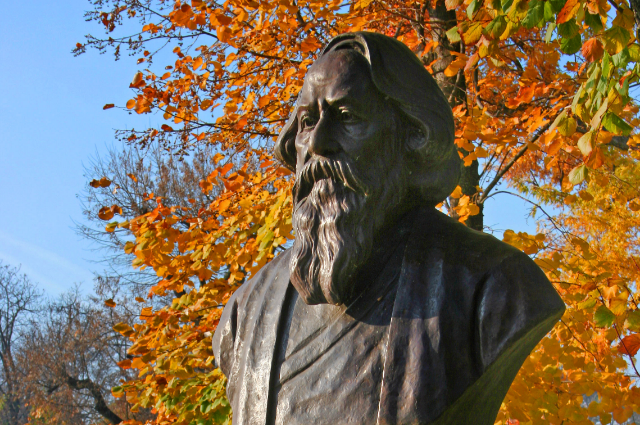
Rabindranath Tagore was a great polymath and writer From Bengal. He is also called the ‘Bard of Bengal.’ Tagore was a towering figure in the millennium-old literature of Bengal; anyone who has well studied the culture of Bengal is aware of the far and wide influence of Tagore in the hearts of the people. His poetry, stories and songs are widely read and heard in the eastern part of India and its subcontinent, predominantly Bangladesh. Rabindranath Tagore came from a Hindu family, one of the landed gentry who owned estates mostly what is now in Bangladesh. The endeavors and efforts to create a cultural and religious dichotomy was overshadowed, when the Muslims of Bangladesh chose Amar Sonar Bangla (The Golden Bengal) as their national anthem, ignoring all the cuts and wounds of the Partition.
The excitement that Tagore’s writing created in the western world was absolutely remarkable. He was widely acknowledged in Europe in the early years of his writing. Gitanjali, a selection of his poems which accorded him the eminent position of a Noble laureate, was brimming up on an unprecedented scale. The work was translated into the English language in London in March of the same year and had been reprinted ten times by November, a remarkable accomplishment for the writer. But he is not much read in the West now, and already by 1937 Graham Greene was able to say; ‘As of Rabindranath Tagore, I cannot believe that anyone but Mr. Yeats can still take his poems seriously.’ Tagore’s relationship with the West was quite peculiar and some even gave pejorative responses to his writings, but Tagore had not gained the courage to resist and face the criticism. Tagore’s writing was contrasting to the image of his writings created by W.B Yeats in the West. The contrast between Yeats's praise of his work in 1912 and his denunciation in 1935 arose partly from the inability of Tagore's many-sided writings to fit in the narrow box in which Yeats wanted to place and keep him. Yeats did not reject early admirations and included some of his writings in The Oxford Book Of Modern Verse.
Tagore had a very strong urge for freedom and nationalism, for him freedom of speech was of highest importance. His temperament was filled with flames of belief of freedom, culture and politics. The hues of his strong urges are seen in his poems of Gitanjali,
“Where the mind is without fear and the head is held high
Where knowledge is free;
Where the world has not been broken up into fragments, by narrow domestic walls
Where the clear stream of knowledge has not lost its way into the dreary desert sand of dead habit;
Into that heaven of freedom, my father, let my country awake.”
Where the mind is without fear is a pre-independence poem in which the poet sincerely urges God to awake his fellow beings for the realisation that the essential need is to live in a free and independent country.
Tagore was a very plain and sober figure, he did not like school education and chose to learn at home. His father’s reiteration to see him as a barrister compelled Tagore to move to England; where he briefly read law at University College, London, but again left schooling for independent study of Shakespeare's plays Coriolanus , Antony and Cleopatra and the Religion Medici of Thomas Browne. His appearance was apparently very powerful and Christ like. His white hairs flowed softly down both the sides of his forehead; his long white hairs shined like silver stars; his nose perfectly arched and his moustaches brushing like a broom on his lips. He was ‘beautiful to look at’ and that ‘his speech has the perfect intonation and slow chant- like moderation of the dramatic saint.’
As an exponent of the Bengal Renaissance, he advanced a vast canon that comprised paintings, sketches and doodles, hundreds of texts, and some two thousand songs; his legacy also endures in his founding of Visva-Bharati University. Tagore modernized Bengali art by spurning rigid classical forms and resisting linguistic strictures. His novels, stories, songs, dance-dramas, and essays spoke to topics political and personal. Gitanjali (Song Offerings), Gora (Fair-Faced) and Ghare-Baire (The Home and the World) are his best-known works, and his verse, short stories, and novels were acclaimed—or panned—for their lyricism, colloquialism, naturalism, and unnatural contemplation. His compositions were chosen by two nations as national anthems: India's "Jana Gan Mana" and Bangladesh's "Amar Sonar Bangla". The Sri Lankan national anthem was inspired by his work.
